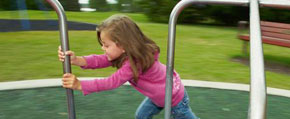We are pleased to announce an exciting new alliance between Active Living Research and GP RED to co-host and coordinate...
Identifying and Measuring Environmental Determinants of Physical Activity
Perceptions of the urban environment, particularly a feeling of being in a safe, interesting, and comfortable place, may have more influence on the desire to walk or bike than specific physical characteristics such as the width of sidewalks or the density of development. This project is engaging a diverse expert panel to help define and measure the perceptual qualities that make a street walkable. The team is using video cameras to systematically record hundreds of street scenes in dozens of cities around the United States, and has brought together experts from planning, design, environmental psychology, and landscape ecology to evaluate the scenes using a five-point Visual Assessment Rating scale. Of 41 qualities originally considered, the experts have selected eight as the most important and worthy of measurement. Among the most important features identified by the team are: imagability, or the quality of being recognizable and memorable; the degree of visual enclosure or room-like quality; and the complexity and coherence in the scene. The team is developing and testing a field manual that can be used by other researchers and ordinary people to evaluate streets for walking potential. The goal is to help explain rates of walking within a population.
Related Tools & Resources
STAY UP TO DATE
RECENTLY ADDED TOOLS & RESOURCES
MOVE! A BLOG ABOUT ACTIVE LIVING
The "Active Living Conference" aims to break down research and practice silos and...







